Many things have changed for the Wancho people living in Chopnu village in the Longding district of Arunachal Pradesh, a state in north-east India bordering Myanmar. Though the village still has a raja (king), the traditional bamboo-and-straw community centres called Morungs, where village elders once imparted Wancho wisdom, customs and practices to unmarried men. The disused Morungs, which women are barred from entering, have been replaced by Community Centres that welcome both men and women, who are also part of the village council.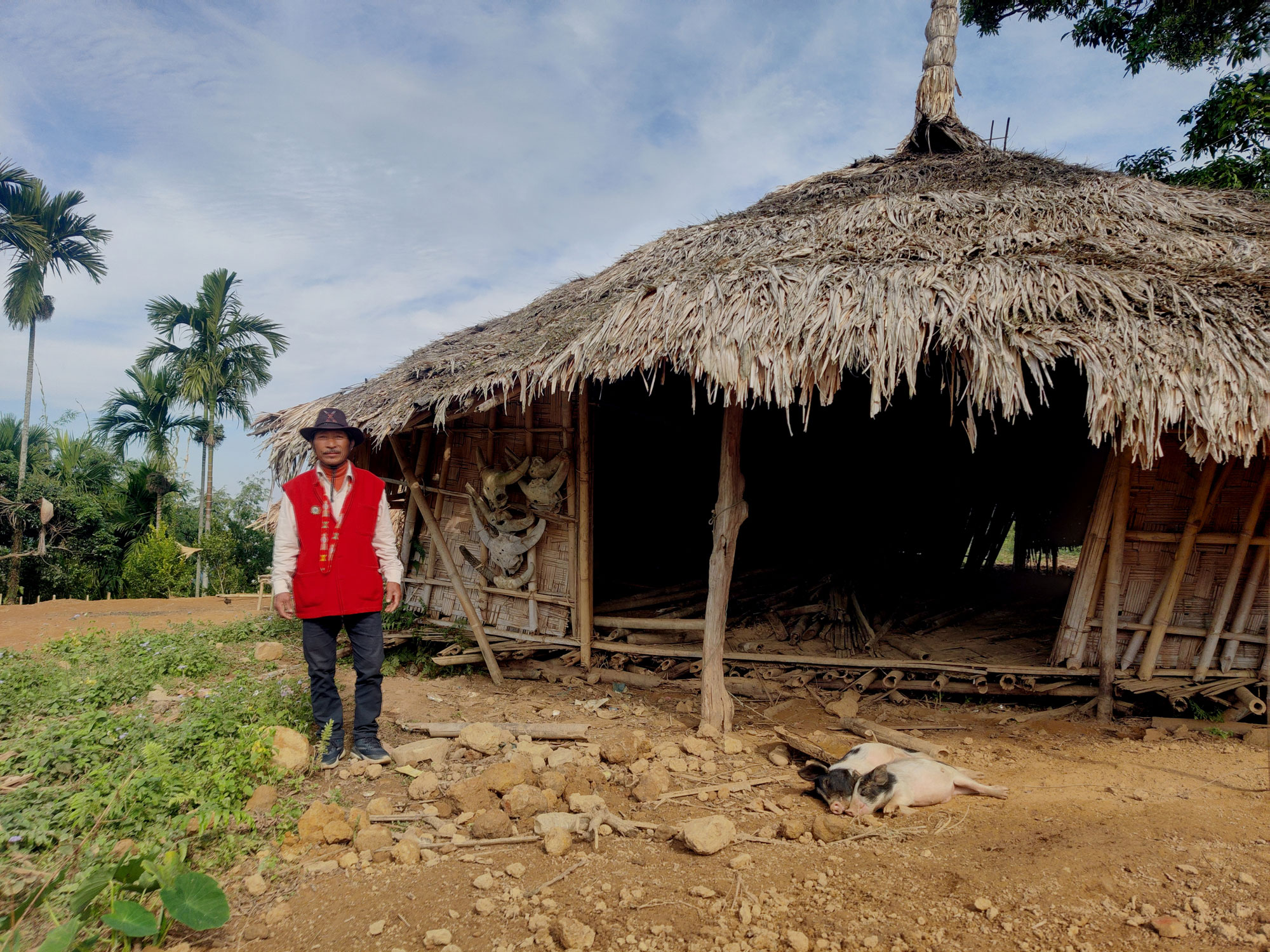
Chopnu headman Mr Ponwang Wangsu outside the disused village Morung, which women are still barred from entering. (Photo: Sanchita Sharma / © WHO India)
In the sparsely populated village of 958 people and 147 households spread over a 3 km radius of undulating terrain, people no longer live in bamboo homes; agriculture has replaced hunting; the village has uninterrupted piped water, electricity and mobile connectivity; middle school, and the village roads are being widened and metaled which has brought healthcare closer to the people in Chopnu village.
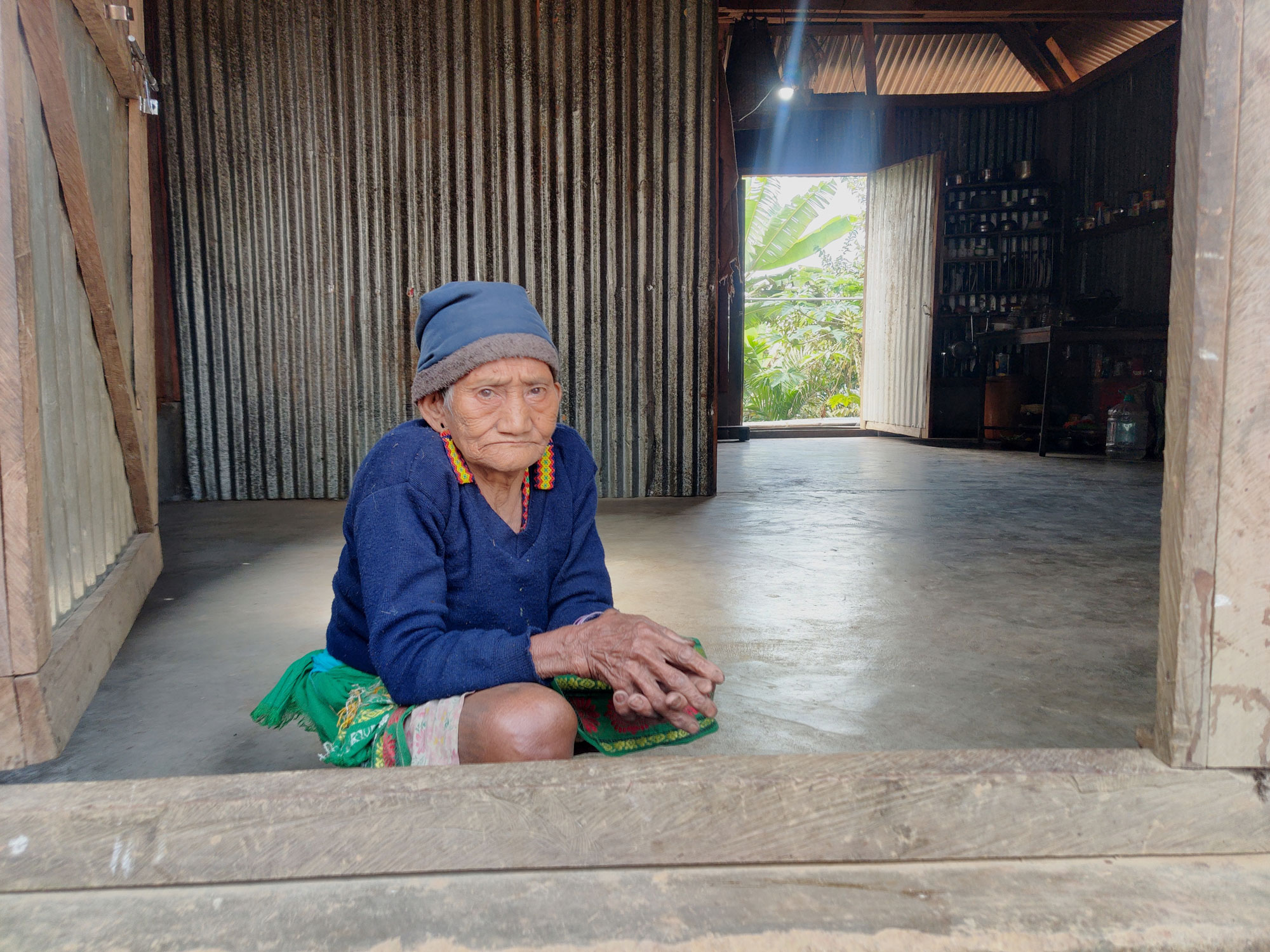
A matriarch in traditional bead earrings in the Community Centre kitchen, which also serves as a makeshift clinic for four hours every month. (Photo: Sanchita Sharma / © WHO India)
Dr T Wangshu, the sole doctor from the village, has moved away to work at Community Health Centre (CHC) Kanubari, which is 50 kms away from Chopnu village and takes 1.5 – 2 hours to reach on the winding mountain road. Dr Wangshu is the officer in-charge of CHC Kanubari, which is staffed with two doctors, nine general nursing and midwifery (GNM) nurses, and three auxiliary nurse midwives (ANM). CHC Kanubari caters to the health needs of Chopnu villagers.
To provide essential medicines, vaccines and health services to isolated communities close to where they live, a health team from CHC Kanubari packs medicines and vaccines in a van donated by Kanubari Fitness Club (of which Dr Wangshu is an active member) to organize outreach camps once a month in remote villages like Chopnu, with support of WHO National Public Health Support Network (NPSN).
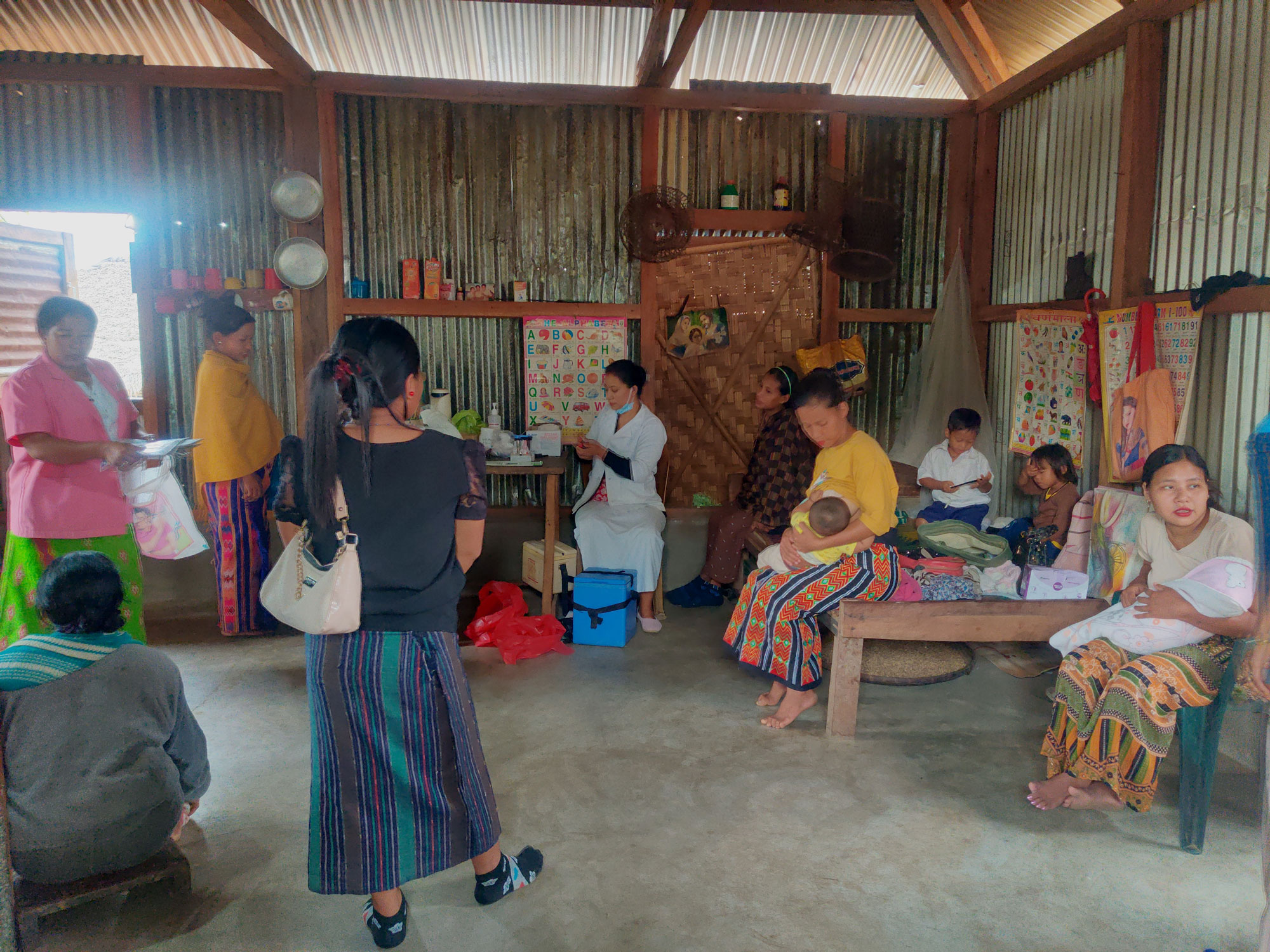
Ms Lipi Pegu, auxiliary nurse midwife from Community Health Centre Kanubari (centre, in white), setting up a temporary immunization and health clinic in the Chopnu Community Centre kitchen. (Photo: Sanchita Sharma / © WHO India)
The ANMs and ASHA efficiently set up a makeshift clinic in the Chopnu Community Centre kitchen, even as the village council meets next door to discuss the health priorities of the villagers with Dr Wangshu. Both rooms are packed, with several women and children arriving for immunization services and medical advice.
“We are completely dependent on CHC Kanubari for medical care. The new highway has cut down travel time to less than two hours, but we need private vehicles to reach it as there is no public transport,” said Mr Ponwang Wangsu, headman, Chopnu.
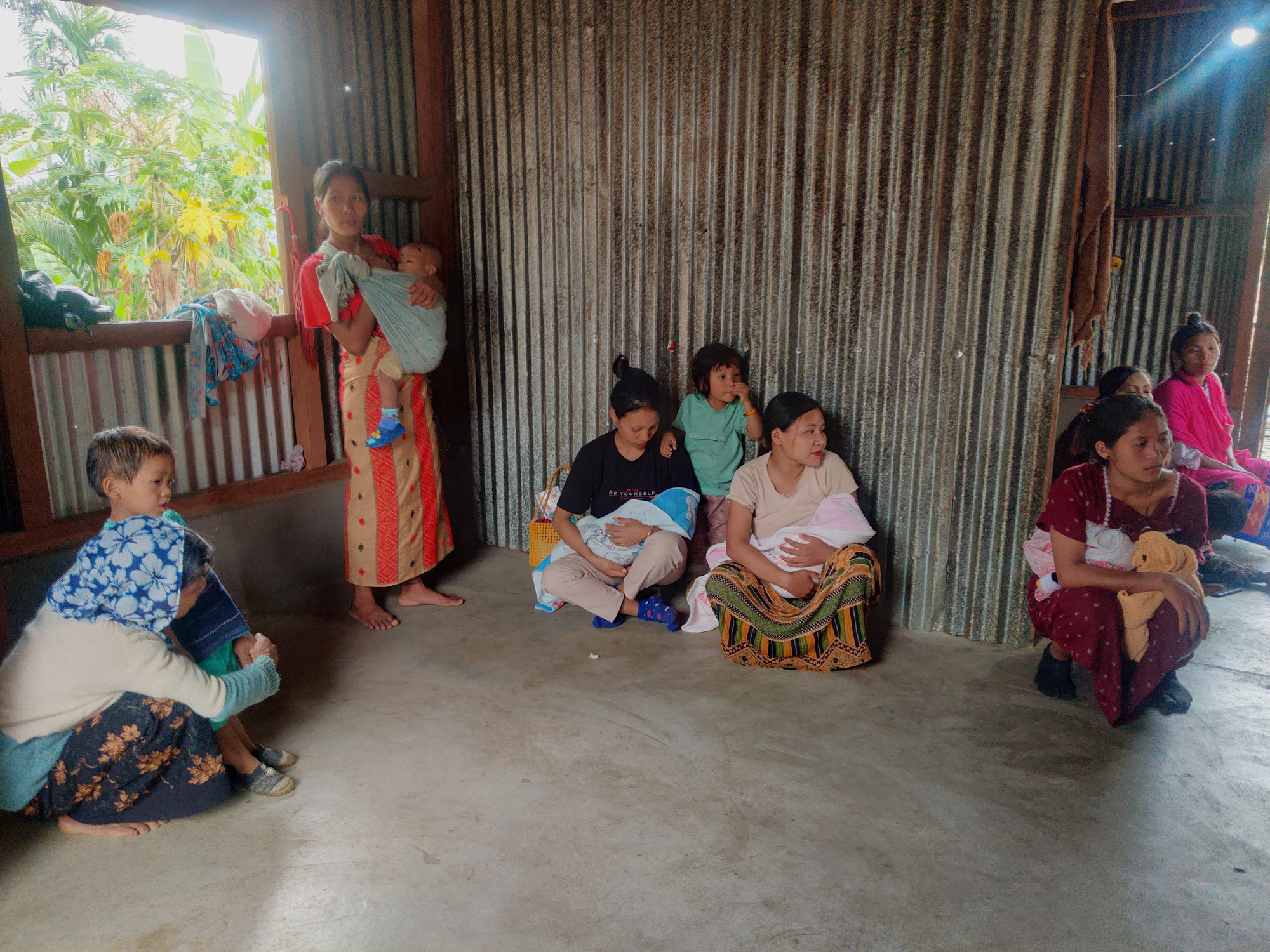
Mothers waiting to get their children immunized at the Chopnu Community Centre kitchen (Photo: Sanchita Sharma / © WHO India)
“There are 11 pregnant women and 26 children under three years of age in Chopnu. The village has two ASHAs (community health volunteers), who are from the community. ASHAs have lists of pregnant women, children and mothers due for vaccination, people with noncommunicable diseases like hypertension and diabetes, etc, and know about people in need of other medical services. They inform families about the date and time of the outreach clinic and coordinate with the village council for its setting up to ensure everyone who needs medical services and treatment are here to get them,” said Dr T. Wangshu, officer in-charge, CHC Kanubari.
Ms Belem Chama, who brought her firstborn one-month-old son Wangton Wangsu for routine immunization said, “The ASHA informed me about the clinic, and also reminded me to carry Wangton’s immunization card for updating. Even after childbirth, she stops by my home to ask about the baby’s and my health, and give nutrition advice based on seasonal vegetables and crops grown in the village.”
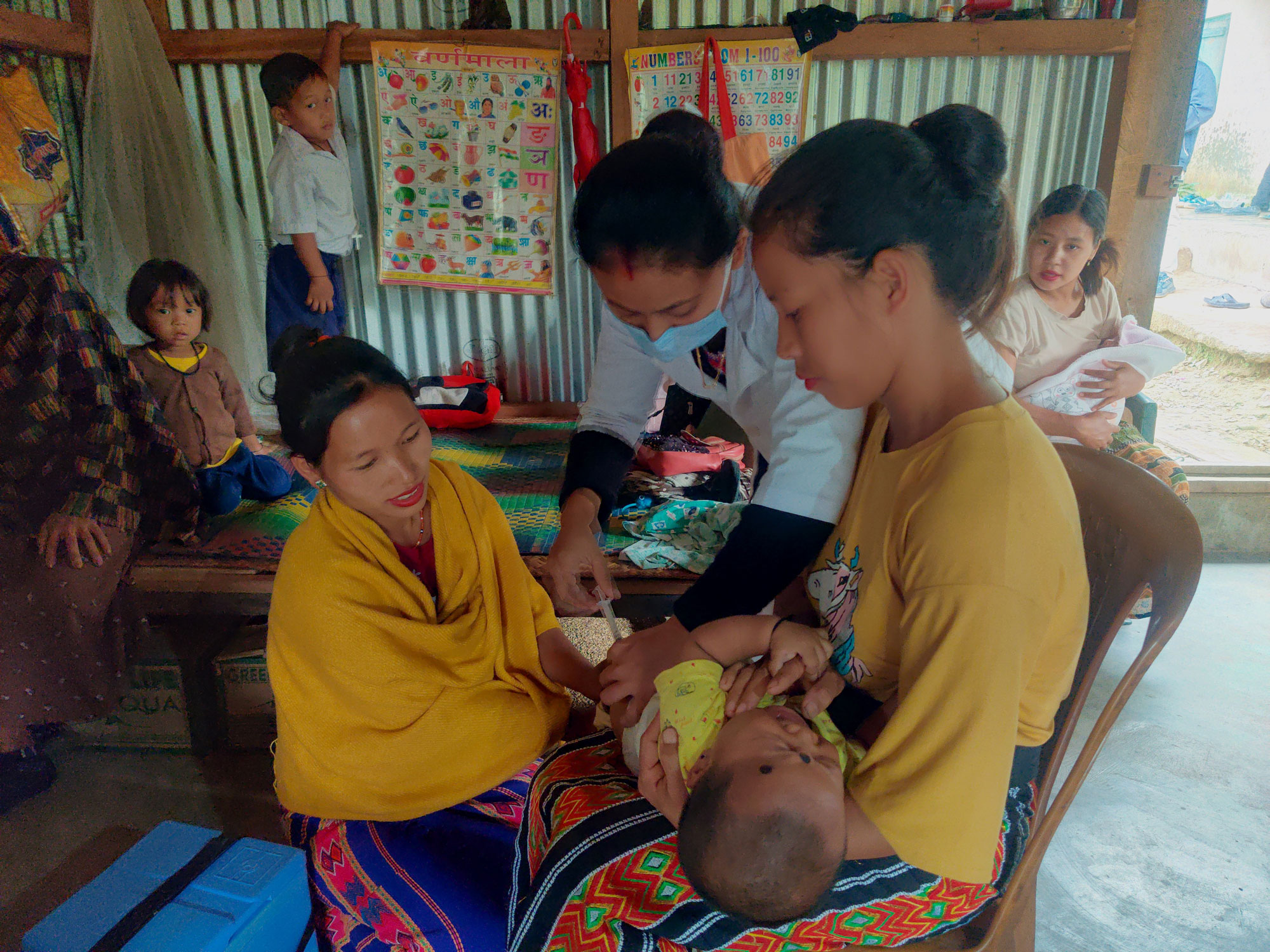
Ms Lipi Pegu, auxiliary nurse midwife from Community Health Centre Kanubari, vaccinates a baby in a makeshift immunization clinic for women and children in the hard-to-reach Chopnu village. (Photo: Sanchita Sharma / © WHO India)
“Comprehensive health services that respect social preferences and are organized around the needs of people, rather than diseases, are trusted and more acceptable to communities. Under India’s flagship National Health Mission, improved quality of services along with community engagement through Jan Arogya Samitis; Village Health, Sanitation and Nutrition Committees; and collaboration with local bodies, have strengthened trust in the public health system,” said Dr Roderico H. Ofrin, WHO Representative to India.
WHO NPSN team from Namsai district, Arunachal Pradesh, accompanies the CHC Kanubari team to meet community leaders and families to advocate for health promotion and monitor quality of public health and immunization services with a goal to identify gaps and support the health team improve services.

WHO NPSN officer advocates for routine immunization, health promotion and disease prevention, management and treatment with village headman Mr Ponwang Wangsu and community leaders at Chopnu Community Centre (Photo: Sanchita Sharma / © WHO India)
The leading reason why children miss immunization doses is their parents being away to work in the fields and their caregivers, usually grandparents, unable to bring them for their due doses of vaccination. “It’s important to create awareness and motivate families to seek health services, for once they start, they are likely to continue. It is always difficult to convince families to bring children who have been ‘left out’ and not received any vaccine, reaching ‘dropout’ children is easier since they have got some vaccines in the past,” said Ms Lipi Pegu, ANM, CHC Kanubari.
WHO NSPN provides technical and monitoring support to strengthen routine immunization and vaccine-preventable diseases to the Government of India with special focus on strengthening services in hard-to-reach areas.
